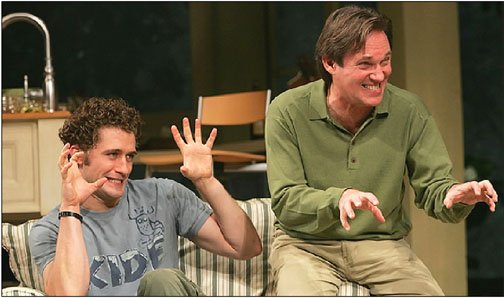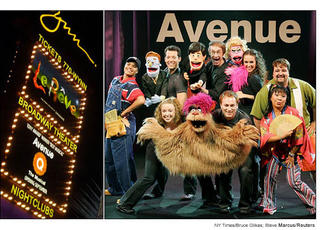The following story comes from Oprah's website, from the show, October 4, 2005: Kidnapped by a Pedophile: The Shasta Groene Tragedy. Please note that the story is heartbreaking...read it so you know what goes on in our country...read it to help children.America's Shame:You see it regularly on nightly newscasts, innocent children abducted, raped and murdered. Polly Klaas, Megan Kanka, Carlie Brucia, Jessica Lunsford, Amber Hagerman, Samantha Runnion—all brutally tortured and killed by sexual predators.
"I have had
enough. With every breath in my body, whatever it takes and, most importantly, with you by my side, we are going to move heaven and earth to stop an evil that's been going on for far too long," says Oprah. "The children of this nation are being stolen, raped, tortured and killed by sexual predators who are walking right into your homes. How many times does it have to happen? How many children must be sacrificed? What price are we willing to pay before we take to the streets and say, 'Enough!'"
On May 16, sheriffs arrive at a sinister crime scene in Coeur d'Alene, Idaho. There they discover the bludgeoned bodies of Brenda Groene, her boyfriend, Mark McKenzie, and her 13-year-old son Slade. The horror is magnified as Brenda's ex-husband, Steve, is hit with more gut-wrenching news: his youngest children, 9-year-old Dylan and 8-year-old Shasta, are missing. Within hours, a nationwide search is underway for the children and the depraved predator who killed their family.
Six agonizing weeks after the murders, a surveillance camera captures Shasta in a convenience store with a man named Joseph Duncan. Later that night, Duncan enters a Denny's restaurant with Shasta. The manager calls 911. Within minutes, police descend upon the restaurant and capture Joseph Duncan. Two days later, detectives find young Dylan's charred remains at a remote Montana campsite.
The police report of Shasta's ordeal is a parent's living hell. Shasta told police that she was in bed when her mother woke her up and told her to come to the living room. Her mother, mother's boyfriend, and 13-year-old brother Slade were bound with zip ties and duct tape while Shasta watched. Then she and Dylan were tied up outside near a swing set. She told police that she could hear screams from inside the house as the three were bludgeoned to death.
Shasta says that she was taken to a remote campsite in the mountains. Shasta said Joseph Duncan bragged to her about the killings. Shasta said he even showed her the hammer that he had used to bludgeon her family. Shasta told police that she was repeatedly sexually molested.
They also learn that Joseph Duncan has an appalling record of violent sexual crimes against children.
Joseph Duncan's story begins in Tacoma, Washington, where he first showed signs of disturbing deviant behavior. At the age of 16, Duncan was accused of raping a younger boy at gunpoint. Duncan was sent to a mental hospital for treatment, but he refused to cooperate and was sentenced to a maximum of 20 years in jail. He only served 12 years before being released on parole.
Duncan was classified as a Level III sex offender, the most dangerous and likely to re-offend. At first he followed the rules, reporting regularly to his parole officer—but after two years, he slipped from sight. For months Duncan lived on the run, bouncing from state to state. Authorities believe that during this time he may have killed two girls in Seattle and raped and murdered a 10-year-old boy in California. When police finally caught up with Duncan in Missouri, they threw him in jail for violating parole. Four years later, he was out again.
Duncan settled in Fargo, North Dakota, registering as a sex offender as Megan's Law requires. Then, at a school playground in Minnesota, a man matching Duncan's description molested two young boys. Police suspected Duncan of the crime, and he was arrested and appeared before Judge Thomas Schrader. Despite Duncan's chilling record of sexual violence against children and his history of violating parole, Judge Schrader set bail at just $15,000—the judge claims he never knew the full extent of Duncan's sadistic past—and Duncan wrote a personal check and walked out of jail a free man. The online diary Duncan maintained began to read like postcards from hell: "It is a battle between me and my demons," he wrote. "I'm afraid…if they win, then a lot of people will be badly hurt."
Shasta's father, Steven Groene, says that Shasta is in generally good health and has returned to her regular activities. "She's been riding horses a lot," he says, "and swimming and playing with her friends. A county fair was just in town so she did that a couple days, and she's getting ready to go back to school." Steve says that he is working with therapists and prosecutors to handle Shasta's recovery as sensitively as possible.
Recently, Steve sat in the courtroom with Joseph Duncan to witness his not guilty plea." [The not guilty plea] was pretty much anticipated by everybody," Steve says. "It's a death penalty case, so it was highly unlikely he was going to go in there and say, 'Guilty.' The thing that bothered me the most is that he didn't speak at all. His lawyers did all the talking for him."
Prosecutors are seeking the death penalty for Joseph Duncan. "I believe that's what is deserved in this case," Steve says, "and I am a believer in the death penalty. I believe if you take somebody's life, you should give yours in return. This guy took four lives and, unfortunately, we can only kill him once."
In February 2005, Jessica Lunsford became yet another victim to this evil sickness. Jessica, who we came to know as the adorable girl in the pretty pink hat, was reportedly taken from her bedroom, raped and buried alive just steps away from her home.
The alleged killer, convicted sex offender John Couey, was living right across the street. Jessica's heartbroken father, Mark, remembers two of his daughter's most prized possessions: her pink hat and her stuffed dolphin.
"It was purple and it had a white belly and when he took her out of here, he let her take her dolphin with her. And when they found her, he buried her alive and she was holding onto her dolphin." Left with only memories, this grieving father has made it his life's mission to never let another child suffer.
Thanks to lobbying on the part of Mark Lunsford, the Florida legislature passed and Florida governor Jeb Bush signed the Jessica Lunsford Act. Under this act, which went into effect in September 2005, anyone 18 or older convicted of molesting a child under age 12 will face a required 25-years-to-life sentence. If they are ever released, they then face a lifetime of tracking device-monitored supervision.
"I think that the best thing we can do is lock [child sex offenders] up for life. I think the system has really failed its people. We've waited too long to make changes. Every time we lose a child, we lose part of our future, a part that we're never going to know about," says Mark.
"And I think every time we lose a child, we reinforce the lie to ourselves," adds Oprah. "I know that sounds very harsh, but I think we do. How can we say we're a country that cares about children? How can we say in our hearts that we really do care about children and then consistently turn our backs?"
Andy Kahan, director of Houston's Crime Victims Unit, is a former probation officer for sex offenders and knows how their devious minds work. "They're extremely calculating, they're devious, they're cunning, they're secretive, they're diabolical," Andy says. "They know how to play the game. They know exactly what they're doing. They plan, they manipulate and they cultivate. These are a different breed of felon than you'll ever have to deal with."
In one particularly chilling episode, authorities found a journal inside a convicted sex offender's jail cell. In the journal—what they're now calling the "Molester's Manual"—he had laid out a step-by-step plan to find his next victims.
One of these frightening fantasies involved finding his prey in a hospital emergency room: "Park in hospital parking lot. Look for families with girls. Be sure family is small. Not too many adults. Be sure children see you. Stand near counter as if speaking with parents. Tell her you need to be strong. Walk the girl to your car. Say, 'We're going to eat. Remember, we must get some food for your parents, too.'"
Andy says of the half-million sex offenders on the streets, about 25 percent—roughly 100,000 sex offenders—are not in compliance with their rules and conditions of parole, probation and registry. "That is a national public safety health crisis," Andy says.
Jeannette Tamayo never knew she was being watched as she walked home alone from her school bus stop. A few minutes after getting home from school, she answered a knock at the door. "There was a man there that I had never seen before," Jeannette recounts. "He asked me a couple of questions and then a little bit later I started closing the door. He pushed his way in and I got scared. He took me to my brother's room."
Jeannette was assaulted, handcuffed, bound and put inside of a box. Just then, Jeannette's mom and brother arrived home. The attacker brutally beat them both and left with Jeannette, taking her captive. He repeatedly tortured her over a series of days.
Amazingly this 9-year-old girl made a brave decision to outsmart her attacker, David Montiel Cruz, so that, she says, he wouldn't be able to "hurt another child the same way he hurt me."
Jeannette figured out a way to slip out of her handcuffs. She grabbed some trinkets that had Cruz's fingerprints on them and then put her handcuffs back on. She then told Cruz that she had asthma and a contagious disease. He released her, but, Jeannette says, "He said, 'If you tell anyone about me or something I'm going to come back and kill your family and then kill you.'"
Police were shocked not only in the way that Jeannette was freed, but by the amount of evidence she'd collected. "When I started taking all the evidence out of my pocket, their mouths just dropped," she says. Jeannette led investigators to her kidnapper's front door. The judge called this one of the most horrific crimes he had ever seen and sentenced David Montiel Cruz to more than 100 years in prison.
While knowing she prevailed over Cruz empowers her, frightening memories still haunt Jeannette three years later. "When I see the stories in the news about other missing children, I start to cry," she says. "I prayed for Jessica and Shasta."
There are an estimated 100,000 sex offenders in America who are living as fugitives. You can make a difference. You can help find them before they harm one more child. Oprah has created
Oprah's Child Predator Watch List, a place to track down wanted child sex offenders. View photos and stats of some of our country's most dangerous sexual criminals. "Memorize their faces," Oprah says, "because you could be the one to save a child—it just took one person to save Shasta. Here is my pledge: I plan to work with law enforcement officials, and if they tell me that you turned in one of these fugitives—or were instrumental in helping them get one of these fugitives we are exposing—and that information leads to the capture and arrest of one of these men, I will personally give a
$100,000 reward."

 Adam Guettel's The Light in the Piazza is the first musical in a really long time that really struck a chord with me. There is something in the story and the music that is so beautiful and expressive and unlike anything I heard in quite a long time. True to my behavior, I of course became consumed by this music and interested in the people involved with the show (which is obviously how I stumbled upon the info that Morrison was from my hometown). The last show that instantly intrigued me in this way was Sondheim's Passion (a comparison critic Eric Grode also makes in his review). I guess I have an affinity for chamber musicals. I have repeatedly been playing this show on my iPod and am saddened that I won't have the opportunity to see the show with the original cast on Broadway as several of the actors have since left (including Morrison and O'Hara who announced her impending departure from the show today).
Adam Guettel's The Light in the Piazza is the first musical in a really long time that really struck a chord with me. There is something in the story and the music that is so beautiful and expressive and unlike anything I heard in quite a long time. True to my behavior, I of course became consumed by this music and interested in the people involved with the show (which is obviously how I stumbled upon the info that Morrison was from my hometown). The last show that instantly intrigued me in this way was Sondheim's Passion (a comparison critic Eric Grode also makes in his review). I guess I have an affinity for chamber musicals. I have repeatedly been playing this show on my iPod and am saddened that I won't have the opportunity to see the show with the original cast on Broadway as several of the actors have since left (including Morrison and O'Hara who announced her impending departure from the show today). On that note, Morrison is not the only OCHSA alumnus who found "fame" and success in New York. Other successful Broadway actors include Stephanie J. Block and Susan Egan (who also devoted a year away from her career to assume the position of interim Artistic Director at OCHSA) and John Stamos (not an OCHSA student, but attended another of my rival high schools). As for Stamos and Morrison, who knew such talent was cultivated in a little town that some think is a little island off the coast of Greece.
On that note, Morrison is not the only OCHSA alumnus who found "fame" and success in New York. Other successful Broadway actors include Stephanie J. Block and Susan Egan (who also devoted a year away from her career to assume the position of interim Artistic Director at OCHSA) and John Stamos (not an OCHSA student, but attended another of my rival high schools). As for Stamos and Morrison, who knew such talent was cultivated in a little town that some think is a little island off the coast of Greece.













